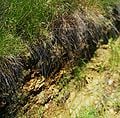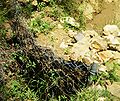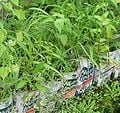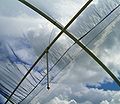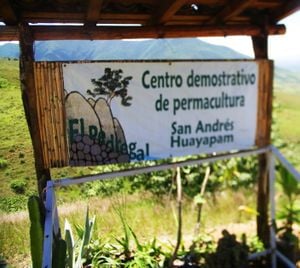
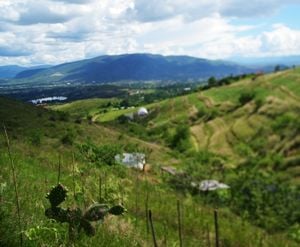
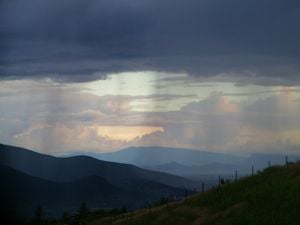
Introduction
Rain catchment systems can be constructed in many areas, both to increase the regeneration of the local aquifer with rainwater and to reduce the soil erosion from rainfall. Rain catchment during wet periods can also help full fill needs during dry periods. Rainfall can be used for drinking water, but here at Pedregal it is mainly used for irrigation and use in aquaculture. This is one project in a series of soil conservation, groundwater recharge, and farming demonstration projects at Pedregal a Permaculture Demonstration Center in San Andres Huayapam, Mexico.
Utilizing Sloped Terrain
System Components of Sloped Terrain Catchment
Storm water or creek water is guided to the place by gravity flow, but rather then following its natural path, artificial basins, channels and ditches are dug so that the rainwater is diverted from its natural path and into the tank. Tanks can be made of a shallow pan of rammed earth, an artificial pond, or a cistern of ferrocement. The tanks at Pedregal are artificial ponds where they have added plant cover to synthesize a pond habitat.
Tank
Placement The tank's placement is one of the most important aspects of the system. You want the tank to be placed above the site of use, to diminish costs and to eliminate the energy demands of a pump. If your tank is below your area there are there are a variety of water pumps.
Size Requirements The dimensions of your tank depends on the volume of water you need to use.
| diameter | depth | capacity |
| 2m | 2m | 6,280 liters |
| 2.20m | 2.20m | 8,360 liters |
| 2.40m | 2.20m | 9,950 liters |
| 3m | 2.40m | 16,960 liters |
| 3m | 3m | 21,205 liters |
-
Ditch along Road way on top of Hill
-
Mesh fencing around loose pile of rocks to make the micro filter dam
-
Storm water run off runs into this cement lined tank by gravity
-
The Tank is high enough for there to be enough pressure for use in sprinkler system in the plant nursery.
-
Happy nursery plants
-
Pressurized Sprinkler System
-
Water is also used for maintaining water levels in the aquaculture pond full of baby fish.
Utilizing Roofs
System Components of Roof Catchments
The system design should include a sloping roof with a fixed gutter of PVC, galvanized steel laminas, or some other materials in the lower part, so you can collect the water that falls on the roof. This gutter must have a small slope and its lower end should lead into a hose or tube which will allow the water to flow into a storage tank. To find the slope of your gutter, first figure out the slope of your land, do not rely on the slope of your roof to tell you this. A small self cleaning filter can be installed between your gutters and your PVC to prevent problems of leaf litter or other things from clogging the system, however Pedregal does include this component. The system can also include a first flush in order to clean the roof of unwanted accumulated debris, leaves, and bird excrement, without having to store it in you tank. This first flush allows the first ten to fifteen minutes of rain to pass your system without going into your storage tank. The remaining water goes to the tank, which in this case is made of ferro-cement. If the end use is drinking water, then some type of extra filter should be added. At Pedregal they created a carbon filter, with alternating layers of sand and charcoal for the drinking water. The rest of the water is used for drip irrigation and aquaculture ponds.
Components of Pedregal Roof System
- Canals both of galvanized sheeting and of PVC
- PVC tubes
- First Flush
- Ferro-cement Tank
- Carbon Filter
- Drip Hoses for Irrigation
-
PVC Gutters are great for straight walls and easy to make
-
PVC Gutter in the back of the building
-
Gutter attached to roof with wire shaped into hook
-
Front gutters made of galvanized sheeting to fit curves of the rounded front of the building. These gutters empty into an open PVC pipe.
-
The top PVC pipe goes to the tank and the bottom is the First-flush, emptying back into the creek.
-
Roof gutters heading into PVC then into tank at right
-
Ferrocement Tank
-
Water Used for Irrigation.
-
Water used for Drinking first goes through a carbon filter
